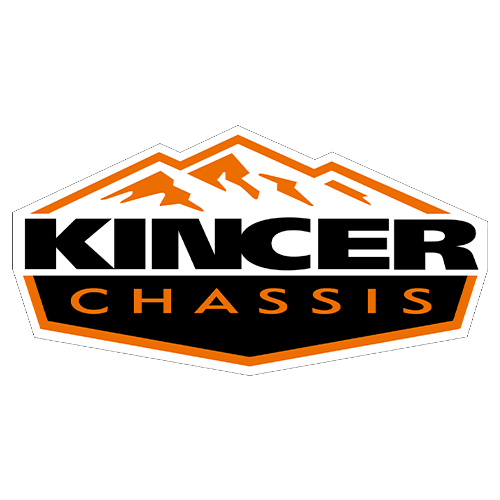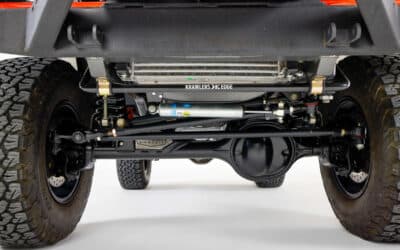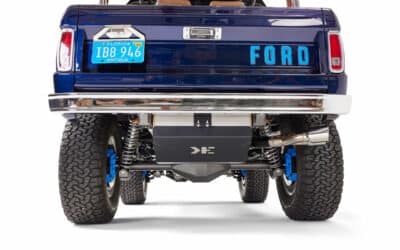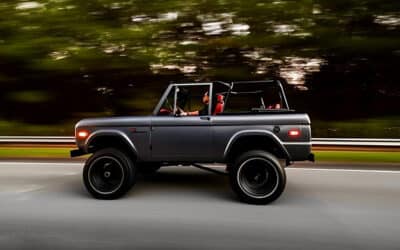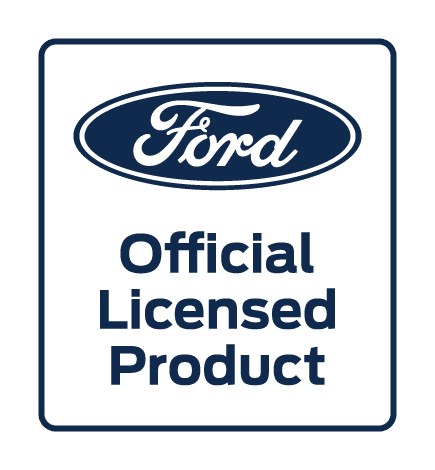The 1968 Ford Bronco remains an icon of classic SUVs, sought after for its durability, simplicity, and off-road abilities.
Our guide digs into the historical impact and lasting appeal of this year’s model, breaks down its specifications, and provides practical information for those interested in buying and maintaining a 1968 Bronco.
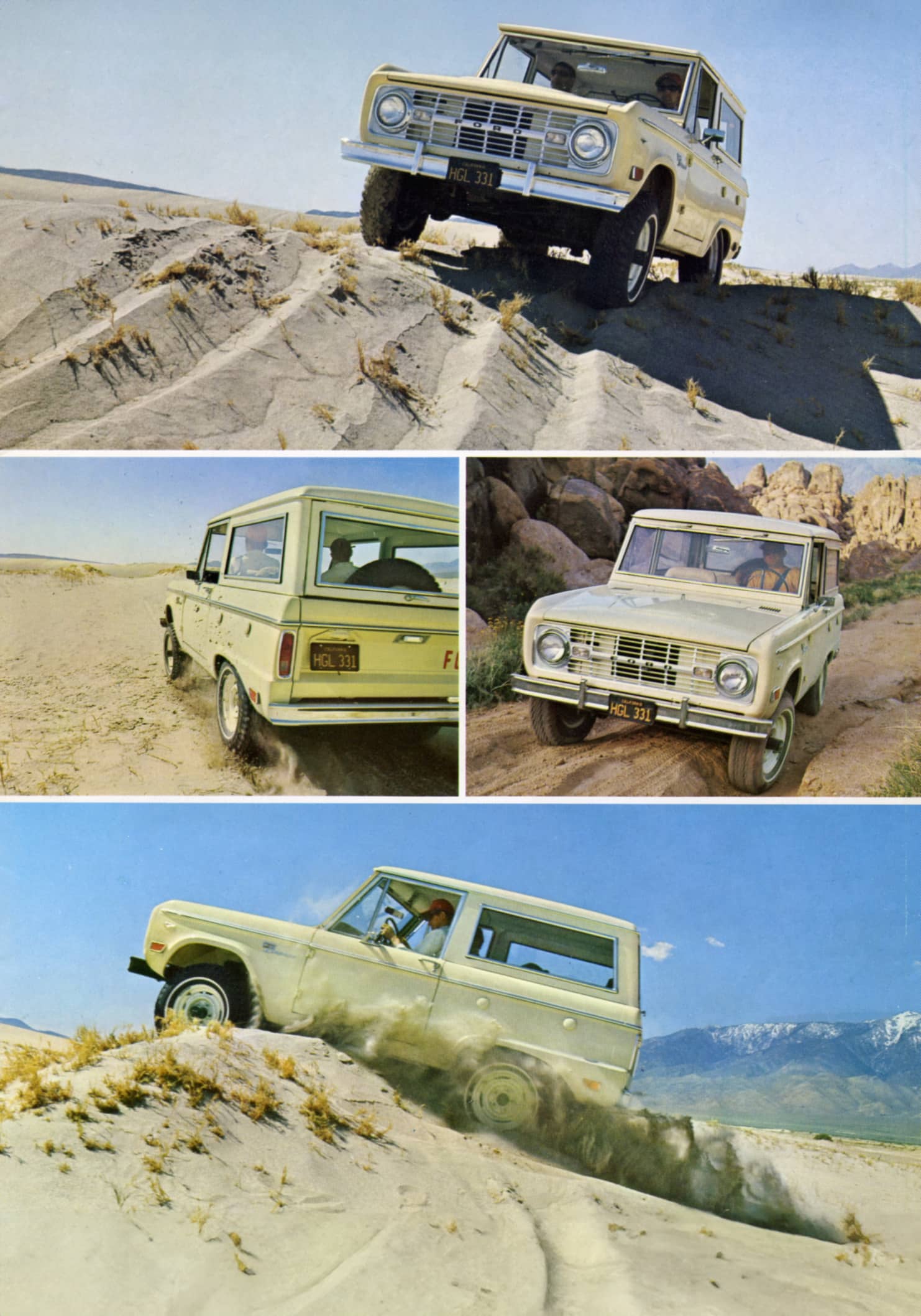
Key Takeaways
- The 1968 Ford Bronco is recognized as one of the pioneering models in the SUV category, offering versatility, customizable options, and a variety of configurations catering to different consumer preferences.
- Today, the 1968 Ford Bronco is considered not just a vintage vehicle, but also a valuable investment piece, with a sharp increase in auction sale values, indicating a strong collector’s market with high demand.
- Maintaining and restoring a 1968 Ford Bronco requires careful inspection and consistent maintenance, and there are a variety of resources available for owners, including communities, restoration specialists, and multimedia showcases.
Table of Contents
Discover the 1968 Ford Bronco: An American Icon
Launched in 1966, the Ford Bronco was one of the first vehicles to be branded as an ‘SUV’ by Ford, marking a significant milestone in the automotive world. Ford’s approach to building the Bronco was fundamentally influenced by its experience manufacturing over 250,000 Jeeps during World War II, equipping the company with a formidable foundation in utility vehicle production.
The development of the Bronco was significantly influenced by market research, which included surveys with Jeep and International Harvester Scout owners. These insights allowed Ford to cater to consumer demands for a utility vehicle that was both robust and comfortable.
The Bronco’s groundbreaking design reflected the growing demand for vehicles that combined the comforts of passenger cars with the practicality of trucks, thus pioneering the SUV category. Ford also promoted the customization of the Bronco, giving owners the ability to adapt the vehicle to suit a range of lifestyles.
This boosted its adaptability in both on-road and off-road settings. The formation of the Bronco Club of America mirrored the operation of the Mustang Club of America, fostering a passionate and informed Bronco community that continues to thrive today.
Model Overview
The 1968 Ford Bronco was available in three primary configurations: the Roadster for the adventurous, the Pickup for the working class, and the Wagon for those seeking luxury and utility in one package. From chrome bumpers to rear seats, the options for customization were extensive, responding to the diverse needs and preferences of the owners. The Sports Package, in particular, offered additional features like side reflectors, curved bumpers, and locking front hubs, adding a touch of elegance to the robust vehicle.
The Bronco also catered to different driving styles with its wide range of transmission choices. Drivers had the option to select from a variety of transmission choices, ranging from the standard three-speed manual to the optional Cruise-O-Matic automatic or a four-speed manual floor shift, depending on their driving preferences. Additionally, the axle ratios varied to cater to different needs, and the option for an Equa-lock limited slip axle further enhanced the Bronco’s versatility.
Although open model Broncos are seen as rare treasures, collectors may be less interested in them due to their lack of practicality in all weather conditions.
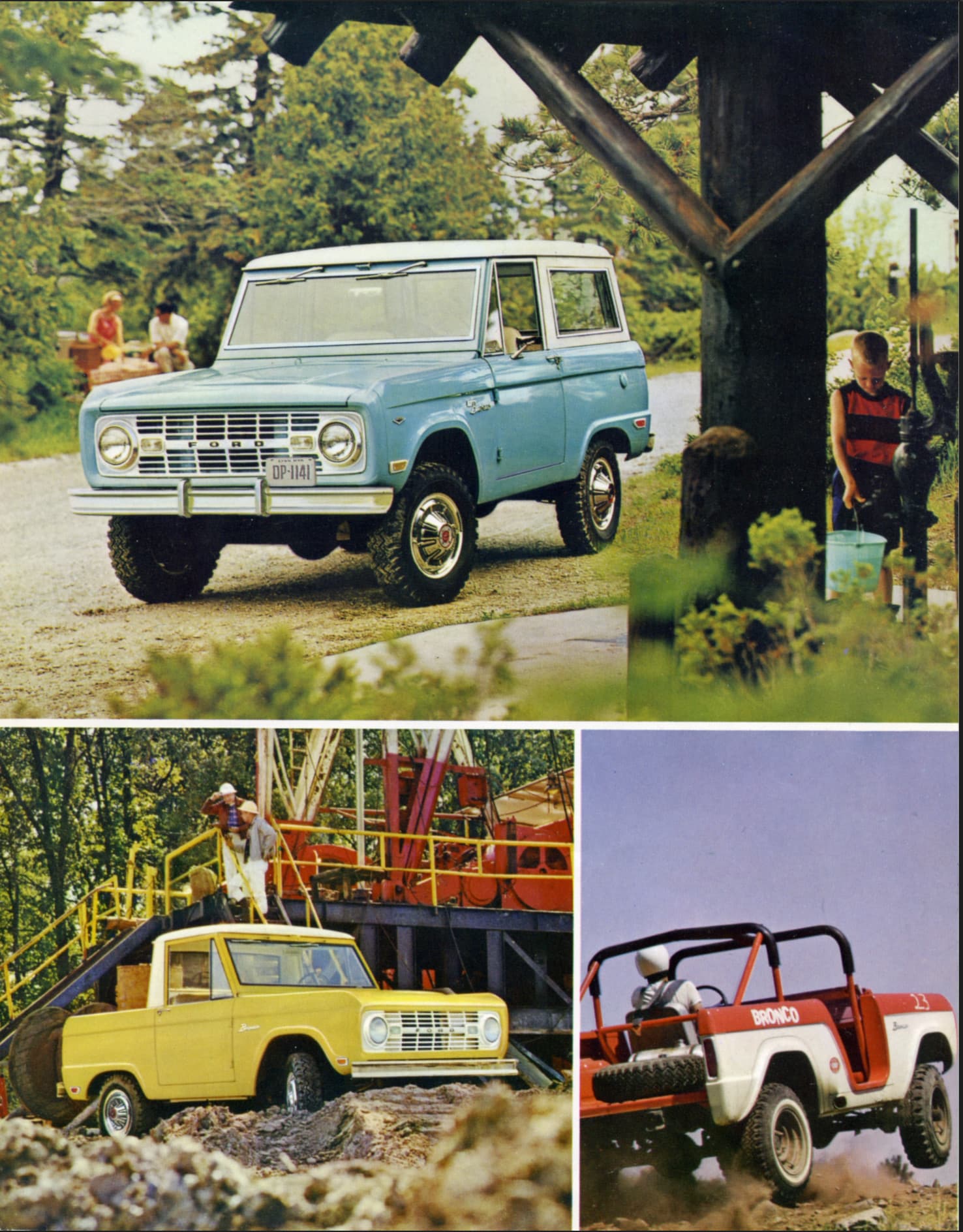
Design and Features
The 1968 Ford Bronco stood apart from its contemporaries with its unique design features. The addition of side-marker lights on the front fenders and reflectors on the rear quarter panels were part of its updates for that model year. The simplicity of the Bronco’s design was evident in the flat glass, straight C-section bumpers, and symmetrical door skins, which not only reduced production costs but also maintained functionality. The interior wasn’t left out of the updates, receiving new armrests, window crank knobs, door handles, and the standardization of a heater and defroster.
The Bronco offered a variety of seating configurations, from bench to single or dual bucket seats, with or without a rear bench, accommodating different needs and preferences. The Sport Bronco Option allowed owners to enjoy additional features like bright-metal moldings, chrome bumpers, the ‘Sport Bronco’ emblem, and a vinyl-covered instrument panel. The Roadster model, in particular, had door openings contoured for a sporty appearance, contributing to the Bronco’s all-purpose vehicle status.
Another unique feature of the Bronco was its:
- Windshield, which could fold down flat onto the hood, enhancing its utilitarian design
- Coil spring front suspension, a notable characteristic for off-road vehicles of that period, with the radius arm design adding to its durability
- Short wheelbase, providing a tight turning diameter of 33.6 feet, allowing for superior maneuverability in off-road scenarios
- Option to create a separate cargo compartment in the back by choosing bench or bucket seats without a rear seat, which came with a bulkhead.
Engineering Excellence: The 1968 Ford Bronco’s Strength and Ride Quality
The 1968 Ford Bronco set a high bar for strength and ride quality, boasting engineering choices that prioritized durability and comfort. Its reputation for toughness began with its foundation—an all-welded, box-section frame—and continued with its husky Mono-Beam front axle designed for higher capacity. Ford’s choice to integrate hefty radius rods and a track bar ensured axle alignment, even over the most demanding terrain, showcasing the vehicle’s resilience.
The strategic combination of a brawny structure with soft-riding coil springs provided an off-road experience where the strength of the vehicle did not compromise the smoothness of the ride. In addition, the 1968 Bronco featured new “shimmyproof” kingpins, adding to its stability and control, characteristics that were complemented by the vehicle’s impressive brake sizes and axle capacities. When compared to contemporary models like the Jeepster and Scout, the Bronco’s brake sizes and axle capacities stood out as follows:
Brake Sizes:
- Bronco: Front 11″x 2.5″, Rear 10″x 2.5″
- Jeepster: Front 10″x 2″, Rear 10″x 2″
- Scout: Front 10″x 2″, Rear 9″x 2″
Axle Capacities, Standard:
- Bronco: Front 2500 lb., Rear 2780 lb.
- Jeepster: Front 2000 lb., Rear 2500 lb.
- Scout: Front 2100 lb., Rear 3500 lb.
These specifications exemplified Ford’s dedication to crafting a vehicle that was ‘toughest where the going’s tough, smoothest-riding where it’s smooth’. Such commitment to engineering integrity and ride comfort underlined the Bronco’s unique place in automotive history and continues to contribute to its desirability
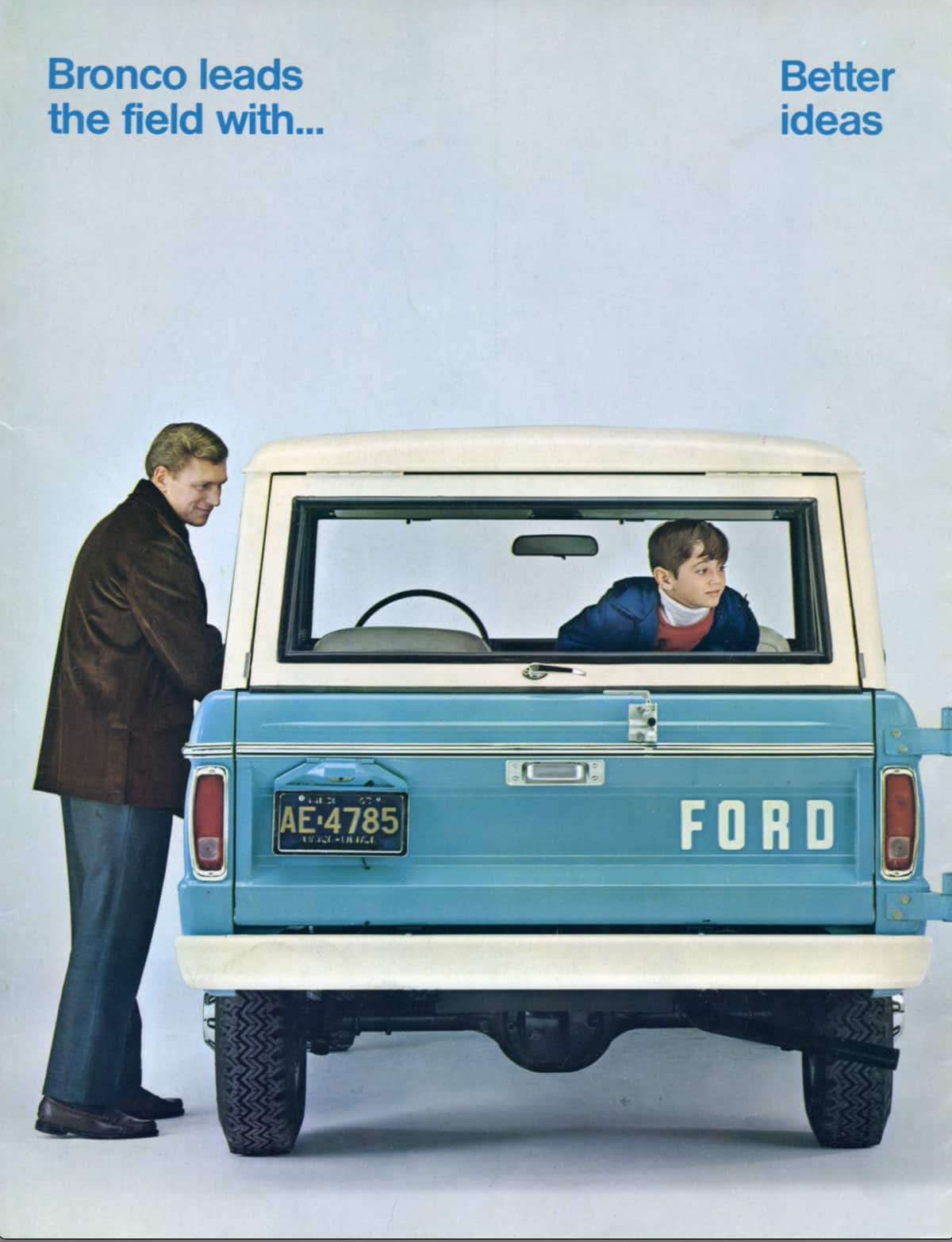
Performance Specs
Engine performance is a defining factor for any vehicle, and the 1968 Ford Bronco didn’t disappoint. It was available with either a 100 HP 170 CID I-6 or an optional 195 HP 289 CID V-8 engine, offering a choice of power to the driver. The original 170 cubic-inch inline-6 engine from the Ford Falcon was adapted with solid valve lifters and a carburetor compensated against tilting to enhance its off-road performance.
The Bronco came equipped with a shift-on-the-fly Dana 20 transfer case, locking hubs, heavier-duty suspension options, and air front springs, ensuring robust four-wheel-drive performance. Compared to contemporary Jeeps, the 1968 Bronco was noted for its strong frame, better driveshafts, solid rear end, and more reliable 302 engines. These features offered advantages in off-road situations and earned appreciation for its power and reliability even in challenging conditions like snow.
If you’re looking to upgrade your Bronco, Kincer Chassis offers high-quality chassis options for this classic vehicle.
Adventure Series Coil-Over Rolling Chassis:
This chassis is designed to provide the best street and trail ride, utilizing a custom 4-link coil-over suspension. It comes standard with fabricated axles, sway bars, and Wilwood disc brakes. The frame is CNC Mandrel bent, providing extra clearance and strength, and it features a custom 4-link suspension with options for various gear ratios and brake upgrades. The coil-over rolling chassis is also available in a 4-door extended length.
Freeway Series Early Bronco Chassis:
Available as either a kit for assembly or a fully assembled chassis, the Freeway Series is designed for improved ride quality. It includes a coil spring setup, a 4-link rear suspension, and an extended radius arm front suspension. You can customize this chassis with a range of suspension height options, axle gear ratios, and brake upgrades. It also offers powertrain options and the frame can come sandblasted and powder-coated if desired.
Classic Series Early Bronco Chassis:
This is a hybrid chassis that offers a modern twist on the classic Early Bronco setup. It combines coil spring and leaf spring suspensions and allows for the integration of a body lift to maintain the Bronco’s classic aesthetic. This chassis also comes with various options for gear ratios and brake setups, as well as 1-ton T-style steering with a new power steering box. Like the other series, it is designed to be strong, providing extra clearance and durability for your Bronco.
Each series is designed with satisfaction guaranteed, indicating Kincer Chassis’s commitment to quality and customer service. The specifics of each chassis type include various upgrades and options that allow for significant customization based on the customer’s requirements. Whether you are building a Bronco for everyday street use, off-road adventures, or to maintain a classic look with modern performance, there is a chassis that fits the bill.
Market Insights: 1968 Ford Bronco Prices Today
Just as the 1968 Ford Bronco made waves in the automotive market with its innovative design and performance, its market value today continues to impress. The average price for a 1968 Ford Bronco varies by engine, with a 289 CID | 235 HP model averaging around $28,500 and a 170 CID | 100 HP engine model around $26,400. In 2023, auction data showed a median sale value for the 1968 Ford Bronco at $106,700, with the highest recorded sale at $434,500, and the lowest at $66,000.
However, the price range for a 1968 Ford Bronco typically falls between $35,000 to $40,000 according to auction house data. This wide range of prices reflects the diverse conditions, specifications, and levels of restoration in which you can find this classic vehicle. These factors should always be taken into account when considering the purchase of a 1968 Ford Bronco.
Price Comparisons
There’s no denying that the 1968 Ford Bronco has come a long way since its original base price of $2,194 at release. Today, auction prices can reach up to $166,900 depending on the vehicle’s condition and unique specifications. The pricing of this vintage ride is wide, and prospective buyers should expect prices to vary significantly. The condition and restoration level of the vehicle greatly influence its market value.
Documentation is critical in the classic car world. Service records and documentation are invaluable for determining the provenance and maintenance history of a 1968 Ford Bronco, factors which can considerably affect its value. A well-documented Bronco is a treasure, both for its historical significance and the confidence it brings to the buyer about the vehicle’s past.
Investment Potential
The 1968 Ford Bronco is more than just a classic ride—it’s also an investment piece. It has consistently appreciated in value over time, making it an attractive choice for car collectors and investors alike. An indicator of this investment potential is the sharp increase in median auction sale value from $83,600 in 2021 to $143,000 in 2024.
The resurging demand for the 1st generation Ford Bronco has played a significant role in driving up their value in the collector’s market. Moreover, the option to transform the Bronco into a 4 Door version with a 4 Door Kincer Chassis and Body from Dennis Carpenter further enhances its appeal, making it an unstoppable force in the classic car market.
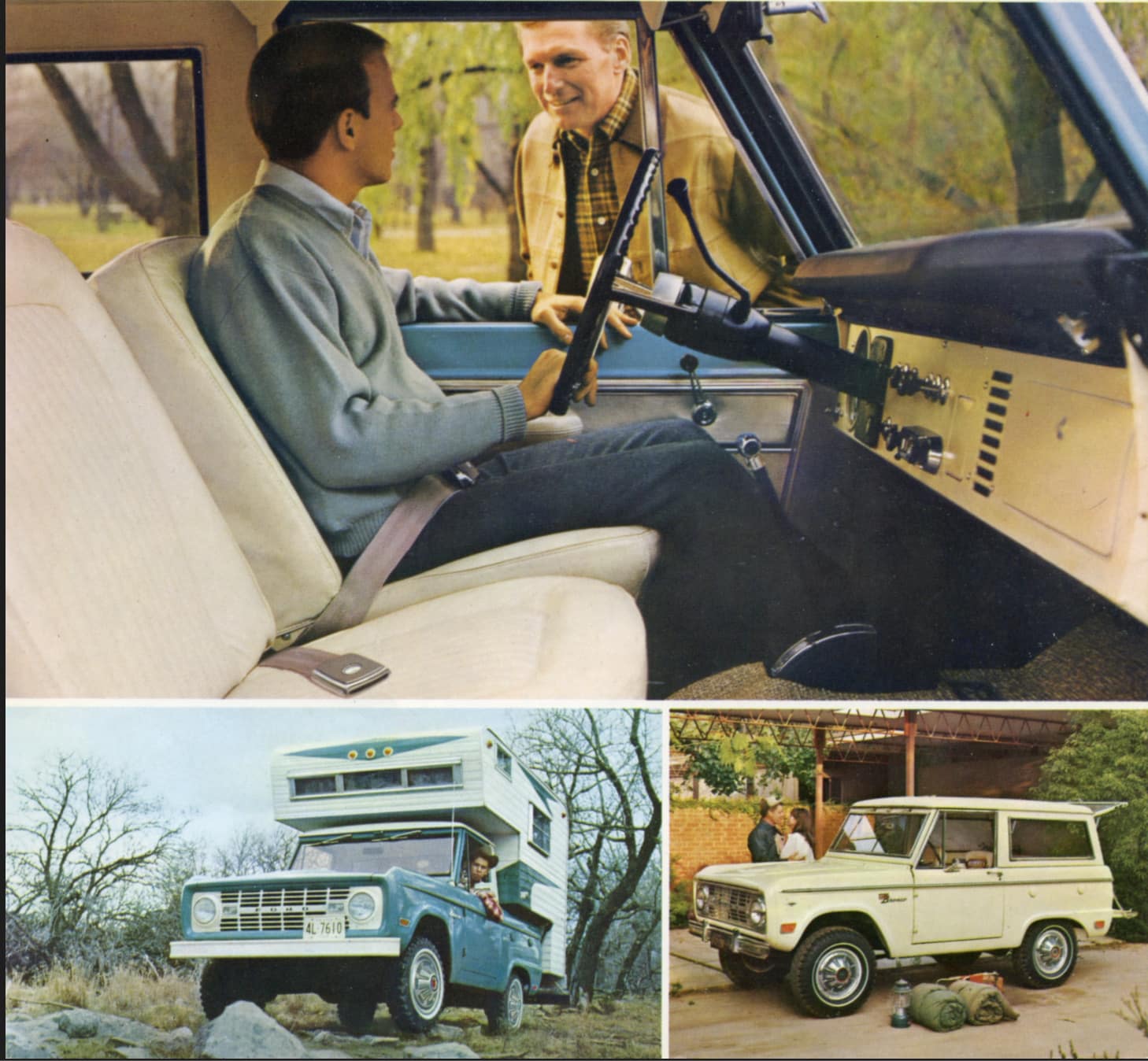
Finding a 1968 Ford Bronco for Sale: Tips and Tricks
Venturing into the classic car market to find a 1968 Ford Bronco for sale can be a thrilling journey. For a successful search, it’s important to define the Bronco’s intended use beforehand – whether it’s for daily driving, off-roading or for shows. This decision can help narrow down the search criteria. Buyers must also choose whether they wish to contract a custom build with a professional or purchase a fully restored Bronco from a restoration company.
Potential buyers can find 1968 Ford Bronco new listings on online platforms such as:
- eBay Motors
- Hemmings
- Craigslist
- Classic car forums
These platforms offer a wide range of Broncos, from project cars in need of restoration to fully restored examples ready for the road. Engaging with a reputable Bronco builder prior to purchase can ensure finding a quality vehicle that fits one’s budget and customization needs. It’s worth noting that restoring or customizing a classic Bronco to a high standard demands a significant amount of time and effort, so managing expectations is crucial.
Search Strategies
The internet has revolutionized the way we search for classic cars. Specialized online marketplaces and forums are crucial for locating a 1968 Ford Bronco as they cater to collectors and people that just love Ford Broncos. Online resources dedicated to classic cars and particularly Ford Broncos can provide a wide range of available vehicles and potentially hard-to-find models.
But the digital world isn’t the only place to look for a 1968 Ford Bronco. Car shows often feature classic vehicles like the Bronco and can be an excellent venue to find vehicles for sale through direct interaction with owners. Local classifieds may also have listings for 1968 Ford Broncos and would allow for in-person transactions, giving the buyer a chance to directly inspect the vehicle.
Inspection Checklist
Once you’ve located a potential 1968 Ford Bronco for purchase, a comprehensive inspection becomes vital. Here are some key areas to check:
- Rust in front floors, door posts, rear sides of the engine compartment, and quarter seams
- Proper alignment of doors, hood, and tailgate, as these can indicate previous accidents or poor repairs
- Freshly painted areas and bed lined interiors that might be hiding body filler or rust
- Frame for any signs of damage or excessive rust
To inspect a used car, follow these steps:
- Inspect the engine for leaks, strange noises, or modifications.
- Take a test drive to check the steering, braking, transmission, and overall driving experience.
- Check the operation of the transfer case and the condition of the differential, which are important for off-road performance.
- Evaluate the condition of the electrical system, lights, indicators, and dashboard components.
- Check the interior for wear and tear.
- Inspect the glass for any damage.
By following these steps, you can ensure that you are making an informed decision when purchasing a used car.
However, an inspection is not only about finding potential issues but also understanding the history and modifications made to the Bronco. Consider the potential trade-offs between originality and modifications, especially if the Bronco is said to be rebuilt; modifications can sometimes mask underlying issues. To ensure a comprehensive inspection, consider seeking expert evaluations, which can reveal:
- safety issues
- leaks
- rust
- other problems that might compromise the vehicle’s integrity
The Rivalry: 1968 Ford Bronco vs. Jeep
Automotive rivalries are the stuff of legends, and the 1968 Ford Bronco vs. Jeep is no exception. Owners often have differing opinions on whether the Bronco or Jeep performs better off-road. Being larger and heavier than the Jeep models from the same era, the 1968 Ford Bronco offers a distinct off-road experience. However, the classic SUV appeal and the presence of a V8 engine in the 1968 Ford Bronco are features not always matched by Jeep models, making the Bronco standout.
On the other hand, Jeeps offer extensive aftermarket support and have a simpler design compared to the Bronco, which often makes them preferred for modifications and repairs.
Comparative Analysis
When it comes to performance, Jeep vehicles from the same era as the 1968 Ford Bronco are often criticized for having weaker axles and transmissions. This has led to a common practice of swapping in sturdier components for enhanced off-road performance.
However, the rarity of the 1968 Ford Bronco on the roads contributes to its distinctiveness, in contrast to Jeep models that are more commonly seen, including modern iterations that may not be perceived as distinctive.
Owner Testimonials
Owner testimonials provide valuable insights into the iconic automotive rivalry between the 1968 Ford Bronco and Jeep. Some owners prefer the Bronco over Jeeps for its standout reliability and ease of maintenance.
Bronco’s advantages highlighted by owners include:
- Standout reliability
- Ease of maintenance
- Ability to start reliably in cold weather
- Better performance in winter conditions
These advantages have been noted by owners who have taken both vehicles off-road.
Aside from its performance, the 1968 Ford Bronco is known for its “cool factor”, public interest, and customizable nature, which add to its overall appeal when compared to Jeeps. Whether you’re a Jeep person or a Bronco fan, there’s no denying that both vehicles have left a mark on the world of off-roading.
Maintaining Your 1968 Ford Bronco: Ownership Advice
Maintaining the vintage appeal of your 1968 Ford Bronco demands a consistent maintenance routine. One of the first steps to protect your Bronco investment is to obtain classic car insurance, ensuring it covers specific needs for classic and custom vehicles. To ensure optimal engine performance, it’s necessary to routinely check and replace the engine oil, coolant, brake, and transmission fluids.
Also, keep the electrical system in good working order by inspecting the battery, alternator, and wiring to prevent common vintage vehicle issues. Preventing rust is a common challenge in classic vehicles. Treating and protecting the Bronco’s undercarriage and body panels can go a long way in preserving its longevity. Understanding the durability and build quality of the 1968 Ford Bronco is also important, as it is often preferred over its contemporaries like the Jeep for its robust construction.
DIY Maintenance Tips
Getting hands-on with your Bronco can be a rewarding experience. Changing the oil involves draining the old oil, replacing the oil filter, and filling with the correct type and amount of new oil. Performing a brake inspection requires checking the brake pads, discs, drums, and fluid levels to ensure everything is functioning as it should.
Keeping the air filter clean or replacing it when necessary helps to improve engine performance and efficiency. To ensure the longevity of your Bronco’s frame, Kincer Chassis offers a handy guide on things to check when buying a used Bronco.
Restoration Resources
While restoring a 1968 Ford Bronco can be a substantial task, it can turn into a rewarding experience with the appropriate resources. Here are some options to consider:
- Quarter Mile Muscle Inc. in North Carolina is known for offering full frame-off restorations and custom modification services for classic Ford Broncos.
- When considering restoration, you have the option to choose between a factory restored Bronco or a resto-mod.
- Experts recommend discussing your budget and expectations with a restoration specialist beforehand.
Protecting the Bronco’s undercarriage and body panels from rust is a critical aspect of the restoration process, emphasizing the vehicle’s long-term durability. Specialty restoration shops offer services such as custom paint jobs with UV protection to both enhance and preserve the appearance of the Bronco. You can find a lot of Bronco resources online for all your early Bronco questions (we hope to keep answering questions you might have in our posts!) fostering a community of sharing and assistance.
Multimedia Showcase: 1968 Ford Bronco in Action
Experiencing the 1968 Ford Bronco in action offers an unparalleled thrill. Online platforms host videos that showcase the Bronco’s performance across diverse terrains, offering a vibrant perspective of this classic vehicle’s capabilities. Whether cruising on everyday roads or engaging in off-road challenges, these videos highlight not only the Bronco’s performance but also the unique style that has contributed to its enduring legacy in car culture.
The Bronco’s off-road racing legacy is also captured in action during events such as the Riverside Four-Wheel Drive Grand Prix and the Baja 1000. These multimedia showcases truly bring the 1968 Ford Bronco to life.
Expert Reviews and Road Tests
The performance and handling of the 1968 Ford Bronco are expertly evaluated in professional reviews and road tests. From in-depth analyses of its off-road capabilities to assessments of its on-road manners, these expert reviews provide invaluable insights and comprehensive evaluations of this classic SUV. Whether you’re a potential buyer or a classic car lover, these reviews and road tests serve as a valuable resource for understanding the enduring appeal of the 1968 Ford Bronco.
Regional Focus: 1968 Ford Broncos Across the USA
While the 1968 Ford Bronco has fans nationwide, its distribution across the United States is uneven. Areas such as California and Georgia are known to house a greater number of classic car dealerships and collectors who specialize in this model. This regional focus reveals the geographical differences in the popularity of the Bronco and the influence of local car cultures on its distribution.
Local Communities (Online and Off)
Communities and clubs dedicated to classic Ford Broncos are present across the United States, offering camaraderie and support for aficionados of the 1968 model. Local Ford Bronco clubs facilitate various events, including meet-ups, rallies, and shows where owners of the 1968 Bronco can showcase their vehicles and share insights on topics like restoration and maintenance.
These communities cultivate a sense of unity among Bronco drivers and act as vital platforms for knowledge exchange and shared experiences.
Summary
The 1968 Ford Bronco is a testament to American automotive innovation, combining comfort, utility, and a pioneering spirit. From its versatile design and performance capabilities to its enduring market value and dedicated enthusiast communities, the Bronco continues to stand as a timeless American icon and obviously a favorite for us at Kincer Chassis.
Whether you’re a potential buyer, a Bronco owner, or a classic car driver, understanding the Bronco’s history, features, and legacy can only heighten your love for this automotive masterpiece (too much? We don’t think so).
Remember that every ride in this classic is a trip down memory lane, a nod to the past, and a thrilling adventure that you can continue to look forward to in the future.
Frequently Asked Questions
How much was a 1968 Ford Bronco new?
The original price of a 1968 Ford Bronco was $2,547.
What are the models of the 1968 Ford Bronco?
The models of the 1968 Ford Bronco include the Wagon, Pickup, and Roadster, with the Wagon being the most popular choice. The Pickup model experienced a decline in sales during this year.
What year Bronco is worth the most?
Early Bronco models, produced from 1966 to 1977, are typically the most valuable, especially those with rare features like the Half Cab or Roadster.
What are the most desirable years for a Ford Bronco?
The most desirable years for a Ford Bronco are considered to be 1977, with 1974 also being sought after and more widely available.
What made the 1968 Ford Bronco stand out in its era?
The 1968 Ford Bronco stood out in its era for pioneering the SUV category by combining the comforts of passenger cars with the practicality of trucks and offering high customizability. This made it a versatile vehicle that appealed to a wide range of lifestyles.
